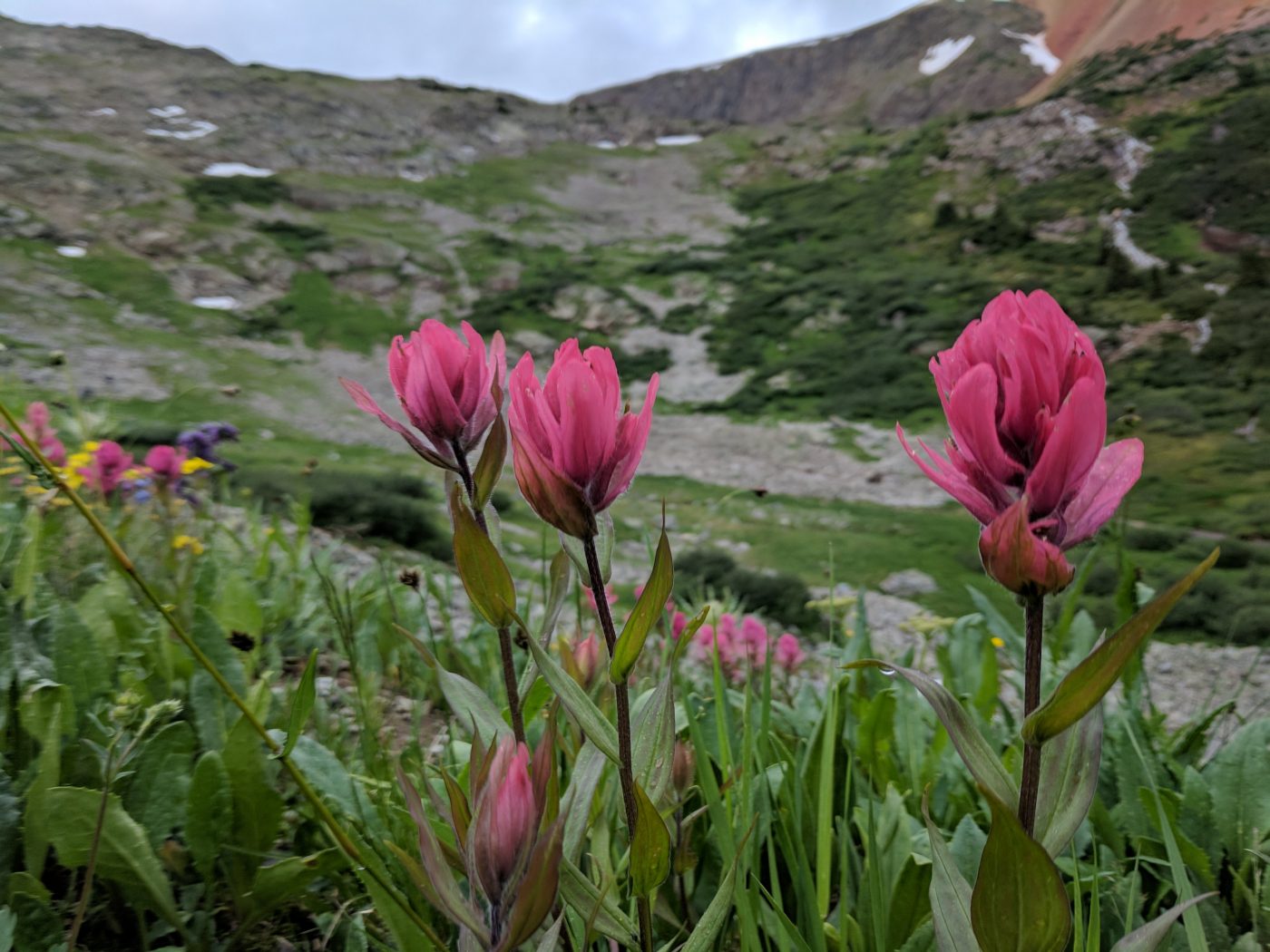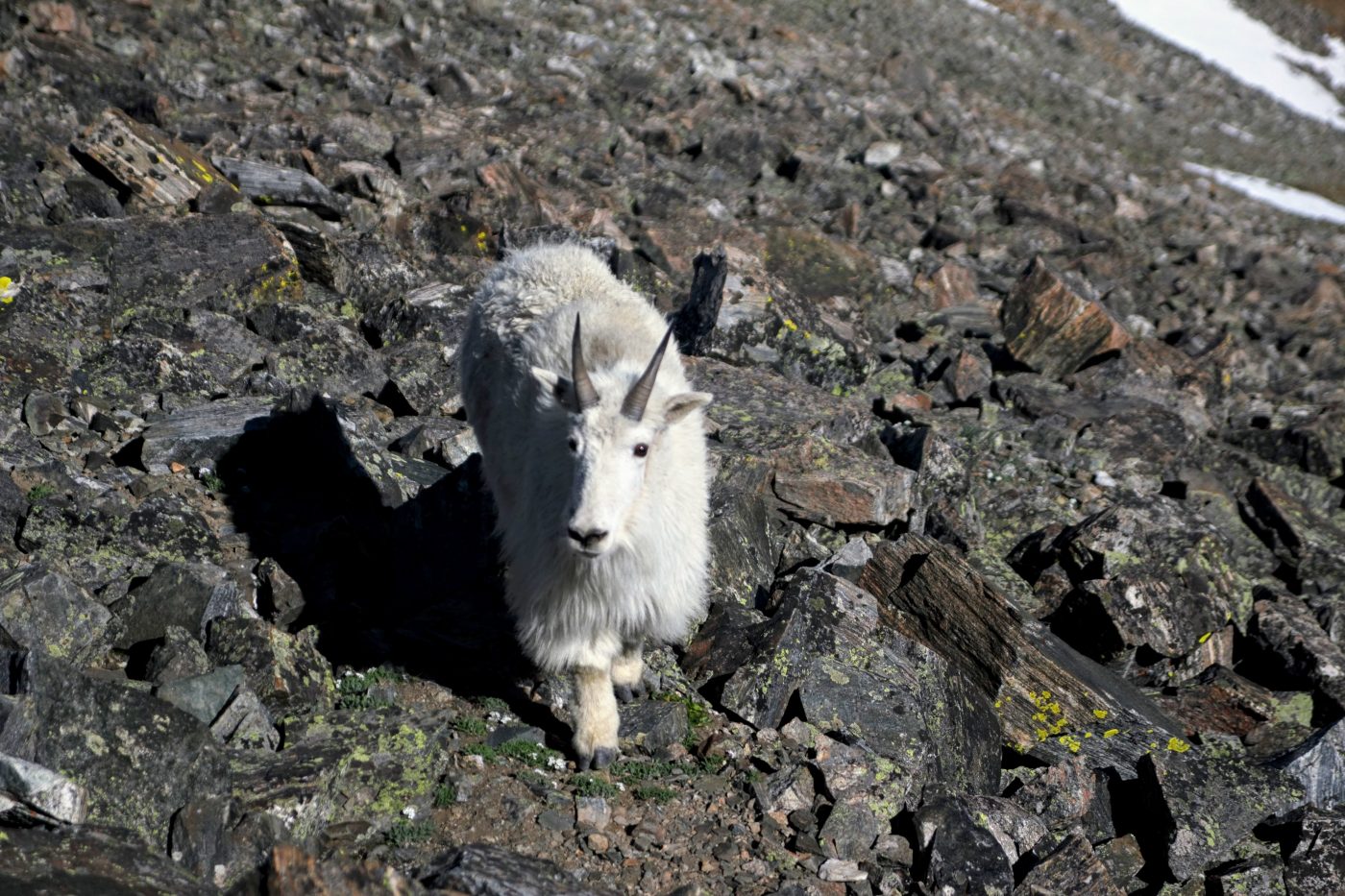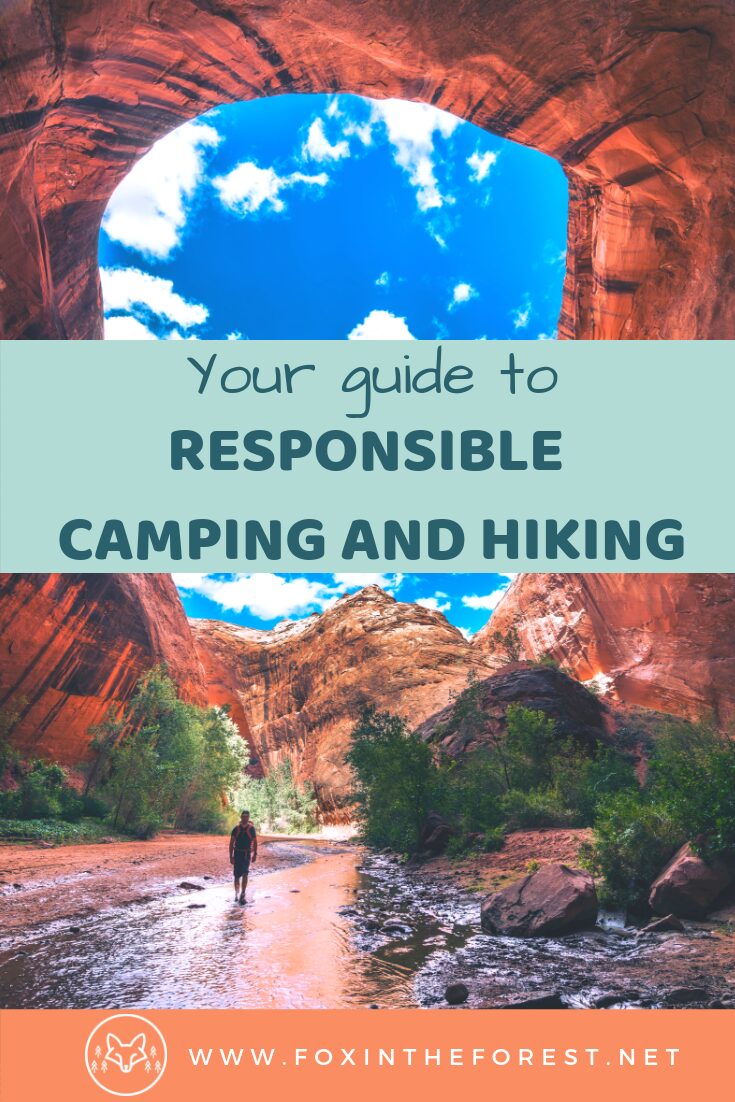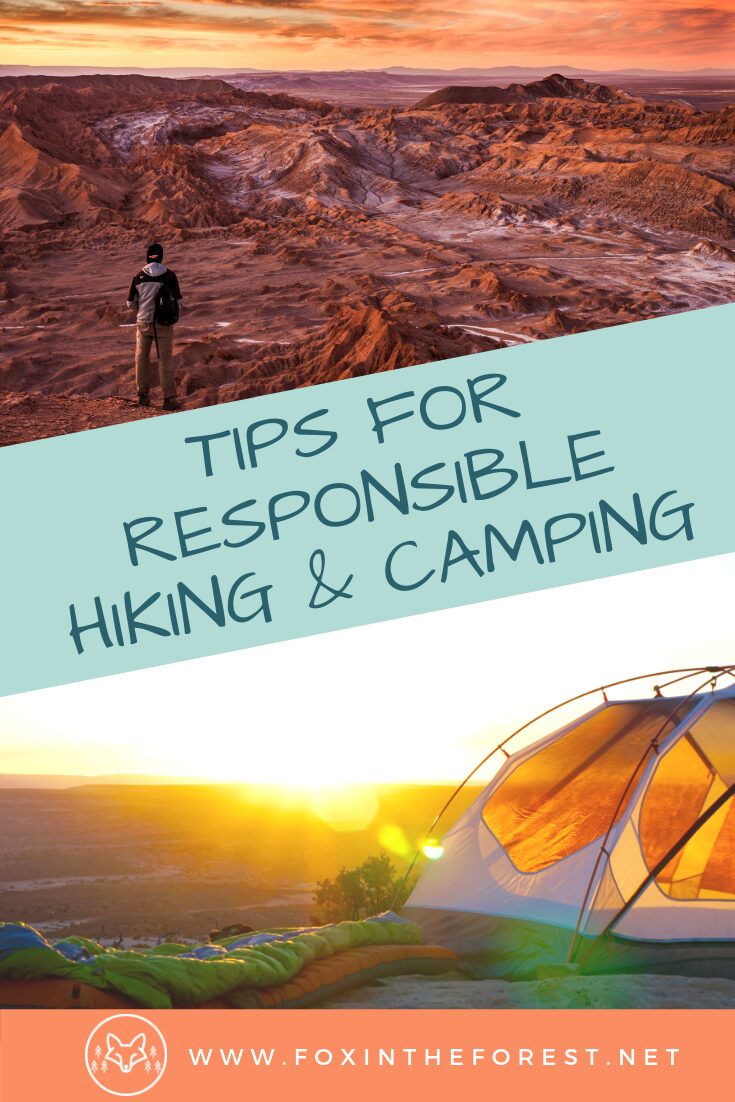Last Updated on November 5, 2021 by foxintheforest
The other day a friend of mine posted a photo on social media of a fist full of wildflowers. At first, I didn’t know what to do. It felt strange calling her out, she’s a friend, and an environmentally friendly one at that, but leaving the subject alone seemed wrong too. I ended up privately sending her an article explaining how devastating picking flowers in a high alpine environment can be. It occurred to me that just because Leave No Trace seems self-explanatory, doesn’t mean that it actually is. Instead of criticizing people who may not know what they are doing something wrong, let’s educate. There is enough anger in the world. It doesn’t have to transcend the outdoors. We all started as wilderness noobs. So let’s get down to the Leave No Trace basics.

Leave the Area Better Than You Found It
As technology slowly takes over the world, more and more people are seeking the benefits of being out in nature to get away from it all. That means more people are coming into wild spaces and leaving their mark. Inevitably this means that there are going to be people who don’t understand the impact they make by leaving trash in fire pits, leaving their dog’s poop bags on the trail (gross…seriously this angers me), or tramping around in pristine areas.
Instead of ignoring the problem, be a part of the solution. Always pack out your own trash, but while you are cleaning up camp why not do a survey of the area and pick up trash that other’s had left behind? I’ve picked up some skanky things from established car camping spots including a moldy pillow and a plastic water bottle filled with chew spit. However, if I didn’t clean it up who would? Remember, your mother doesn’t follow you around, so clean up after yourself.

Want to up your hiking game? Check out these resources:
- The Ultimate Guide to Hiking
- What You REALLY Need to Go on a Hike (coming soon)
- The Best Hiking Clothes for Any Budget
Use What is Already Established
Using previously established campsites, for both car camping and backpacking, helps to minimize further impact to our environment. I have yet to be on the trail in the backcountry and see zero established campsites. There are always a few existing sites. If there are zero options and the sun is rapidly setting then choose a spot that has barren land. Don’t bother with a fire ring, and try to keep your camp as small as possible. Try not to camp within 200 feet of a source of water, such as a stream or lake, to avoid disrupting the ecosystem.
As far as trails are concerned, stay on designated trails. If you are worried about getting wet or muddy, consider buying a pair of gaiters for wet terrain. There are times where a trail simply doesn’t exist. Many of the peaks I climb require travel over high alpine terrain. This ecosystem is delicate and extra care should be taken when traveling. When traveling in a group, if possible, disperse to minimize any impact. Try not to step on flowers or budding vegetation. This is nearly impossible here in Colorado, but if you are making a conscious effort to think about where you are stepping, it does help.

Let’s Talk About Poop
I’ll cover a little bit more than number two’s here. To be honest, I just wanted to use the world “poop” in a heading. But I digress, let’s talk about waste. Dig a “cat hole” six inches deep and at least 200′ away from water sources and the trail. Do your business, and cover the cat hole. Pack out all toilet paper and hygienic waste (this includes tampons and sanitary pads). If you don’t have the stomach to pack it out, then simply don’t go into the wild. Buy odor-proof bags if the smell is bothersome.
Don’t forget to bury Fido’s waste too. Ladies, consider using a pee rag. I just use an old bandana. When I’ve gotta go pee I’ll use it wipe. Simply carry it on the outside of your bag and let it dry. Honestly, it’s so much less of a hassle and the sun kills any bacteria.
High alpine environments work a little differently. Have you ever been on a peak and put your hand down on a rock only to find there is a petrified poop there? Well, it turns out that poop doesn’t decompose well in high altitudes (I’d hate to see what a pika den looks like). If you’re above tree line, pack out your poo. You can double bag it to get rid of the smell, or consider buying a separate odor proof bag. Again, if this is something you can’t stomach, don’t travel that high until you are comfortable with it. At the end of the day we are all living beings and we produce waste, it’s natural. Get over it.
Attention Ladies: I’m getting real about life in the wilderness with these fem-focused posts:
- The Hassle-Free Way to Pee Outside
- How to Deal with Your Period in the Wilderness (coming soon)
Best Practices for Camp Fires
More and more people are causing forest fires in the backcountry. Consider not having a fire when backpacking, unless you absolutely need it for survival. To be honest with you, the last time I had a campfire while backpacking was when John and I were soaking wet from hiking in the rain for four hours. That would be an appropriate time to have a fire in the backcountry. Fires scar the landscape, and most people do not properly put them out. You need to drown the crap out of it or bury it in four to six inches of dirt. I don’t know about you, but after I’ve slogged 15 miles with my house on my back, fire is the last thing on my mind.
If you are at a campsite, use a designated fire ring, don’t move it, or make another one. Again, use what is there. Keep fires small, only use what you can break with your hands. Use dead branches, preferably those that have been on the ground and never cut live branches for a fire. Ask yourself if a giant fire is necessary. Also, please, for the love of all things wild, don’t burn your trash. It’s horrid for the atmosphere. Even paper products contain ink that is awful for the environment. Not to mention burning food waste or trash that contained food can attract unwanted visitors.

Respect Wildlife
This brings me to my next point. Don’t feed the wildlife! My friend Vivian and I were on top of Fletcher Mountain, a low-trafficked Colorado 13er, and we came across the most daring pika I’ve ever seen. That thing climbed all over me and tried to eat Vivian’s brightly-colored pack straps. I never thought I’d say I would be attacked by a pika, but it happened. That’s not normal pika behavior. Sure, they might munch through a bag or two (or three!) if you leave it on the ground unattended, but this little guy showed zero fear.
Along those lines, don’t approach the wildlife. It is extremely dangerous. Do you like it when strangers aggressively come up to you with a camera? Didn’t think so. Admire from a far, or purchase a telephoto lens. I’ve been approached by a mountain goat on a narrow summit. I chuckled to myself as I hustled the other direction fearing Mr. Goatsworth might charge. This must be what wildlife feels like when they are approached by humans! I mused. Needless to say, it made me nervous.

Spend time in the mountains? Here’s a few handy tips to make the most of your mountain hike.
- Tips and Tricks for Your First Summit
- How to Adjust to Altitude Safely
- What to Pack for a Mountain Hike
Let It Be
Leave nature as you found it. This seems really obvious, but it can be a tough one to follow. Sometimes it’s really tempting to take a piece of nature home with us, but resist. This includes introducing new things into the environment. Don’t bring in firewood that contains non-native species. Don’t pick the flowers, take home rocks or other items you find on the trail, except trash. Always take trash!
A good mountaineer understands that these Leave No Trace basics apply to the mountain as well. It is extremely difficult to ascend a steep peak without moving rocks. However, if at all possible, avoid routes that would leave a scar on the environment. Don’t throw rocks or boulders intentionally to make your path easier, navigate your terrain like a proper mountaineer.
Don’t Do it for the Gram
This is a big one, and a hot topic in the outdoor space. Should you geotag your Insta photos? I recently stopped doing this because it encourages others, who might not be well versed in Leave No Trace to trample wild spaces.
Geotagging can cause waves of people to show up for the perfect pic. I’m not trying to be an elitist, but I believe that the best spots should be found the old fashioned way, exploring for yourself, not through social media. In fact, some of my favorite places weren’t found using social media. So think twice before using a specific geotag location.
On the flip side of that coin, it’s worth mentioning that many people see not geotagging as gatekeeping. Meaning, it is being used as a tool to keep people from going to their favorite spots. I totally get that. The choice to geotag is personal, and I’d be lying if I said I had refrained from geotagging because I don’t want the world to know where a particular photo was taken.
However, instead of arguing whether or not you should geotag a specific locale, I recommend using your outdoor privilege to teach newer outdoor enthusiasts how to find their own hidden trails and wilderness areas in a responsible way. That’s why I created this blog, to empower YOU to get out there and have your own adventure.
Practicing these simple Leave No Trace basics and spreading the good word with others will help keep Mother Nature pristine and wild. Everyone deserves a chance to spend some time in nature, so let’s work together to keep preserving what we find so special for generations to come.


